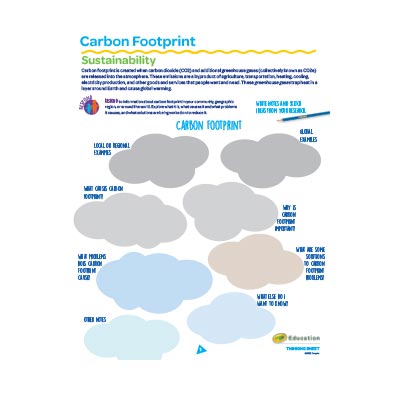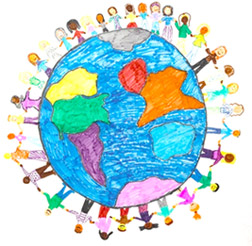
Thinking Sheet
View Page


Crayola treasures the 120-year collaboration we’ve had with educators. Together we help students bring critical thinking, creativity, and collaboration to transdisciplinary learning. We are delighted to share resources that were developed with educators and available for free, to help you achieve your teaching objectives.
View the Crayola Sustainability Statement now.
Crayola through our parent company, Hallmark, joined the Science Based Target initiative, a collaboration of global nonprofit organizations, businesses, and world governments that set goals to limit global warming to not exceed 1.5°C. To achieve this, participating organizations will need to reduce carbon emissions significantly by 2030. Crayola sources raw materials locally and manufactures many crayons and markers close to where they are used, which helps reduce the carbon footprint. Crayola has reduced CO2e emissions from the operating of our company-owned facilities’ direct and indirect energy sources by 82% since 2019, with investments in renewable energy as well as efficiencies in our US manufacturing process. (Direct energy includes the gasoline, oil, natural gas, etc. used while indirect emissions are created when the energy is produced but not where it is used.)
Crayola is proud to host a 20-acre solar field next to our Pennsylvania plant. We invest in 100% renewable energy from solar power for U.S. manufacturing, enough to make more than 3 billion crayons, 700 million markers, and 120 million jars of paint a year. These 33,000 solar panels also enable Crayola to redirect any excess electricity back to the grid to help offset community needs.
In the past 10 years, Crayola has redesigned our Broad Line markers to save an estimated 2 million pounds of plastic versus the previous design.
Most Crayola colored pencils are made from wood that is reforested in an 8,288 hectare pine forest in Brazil. Each year 300,000 seedlings are planted to restore the forest.